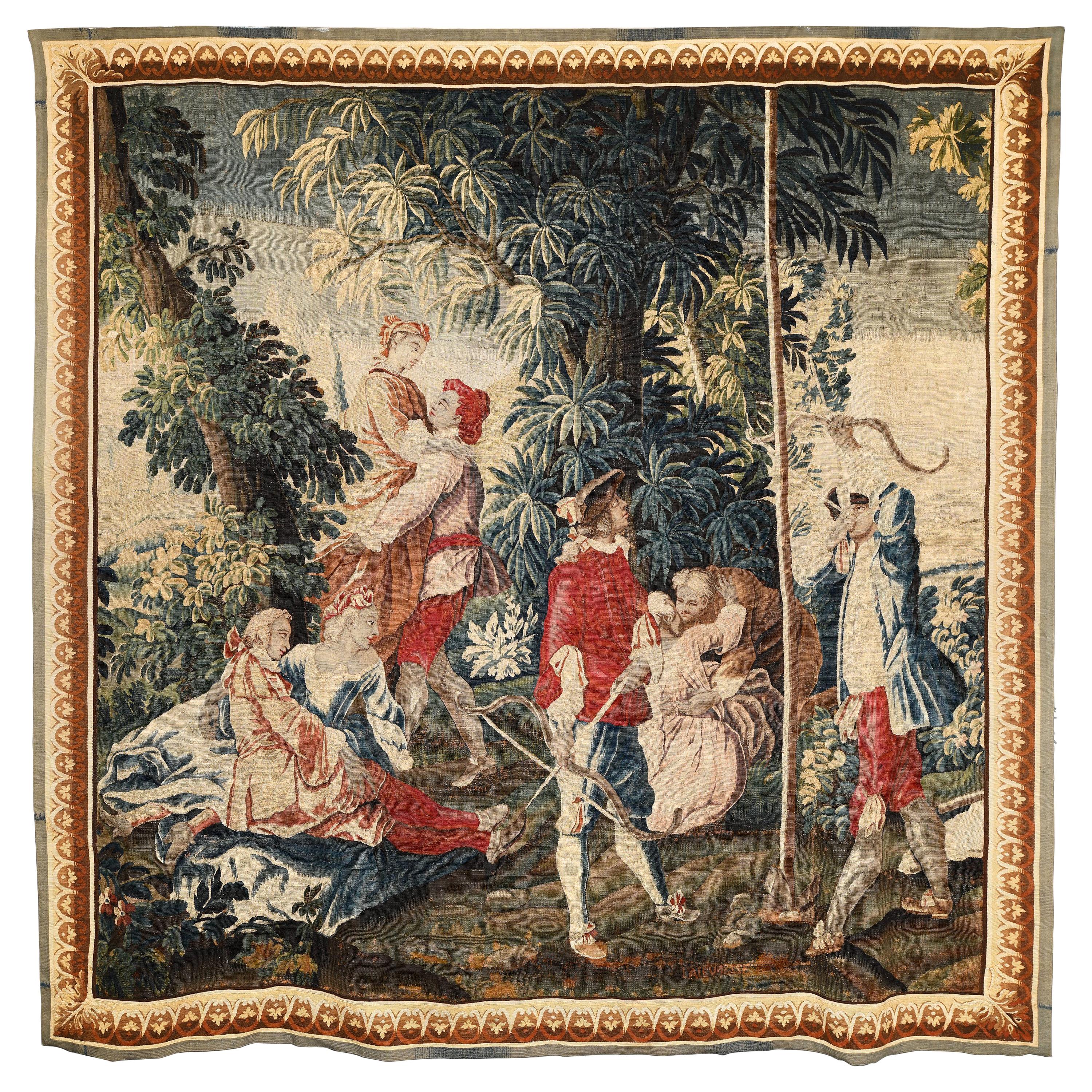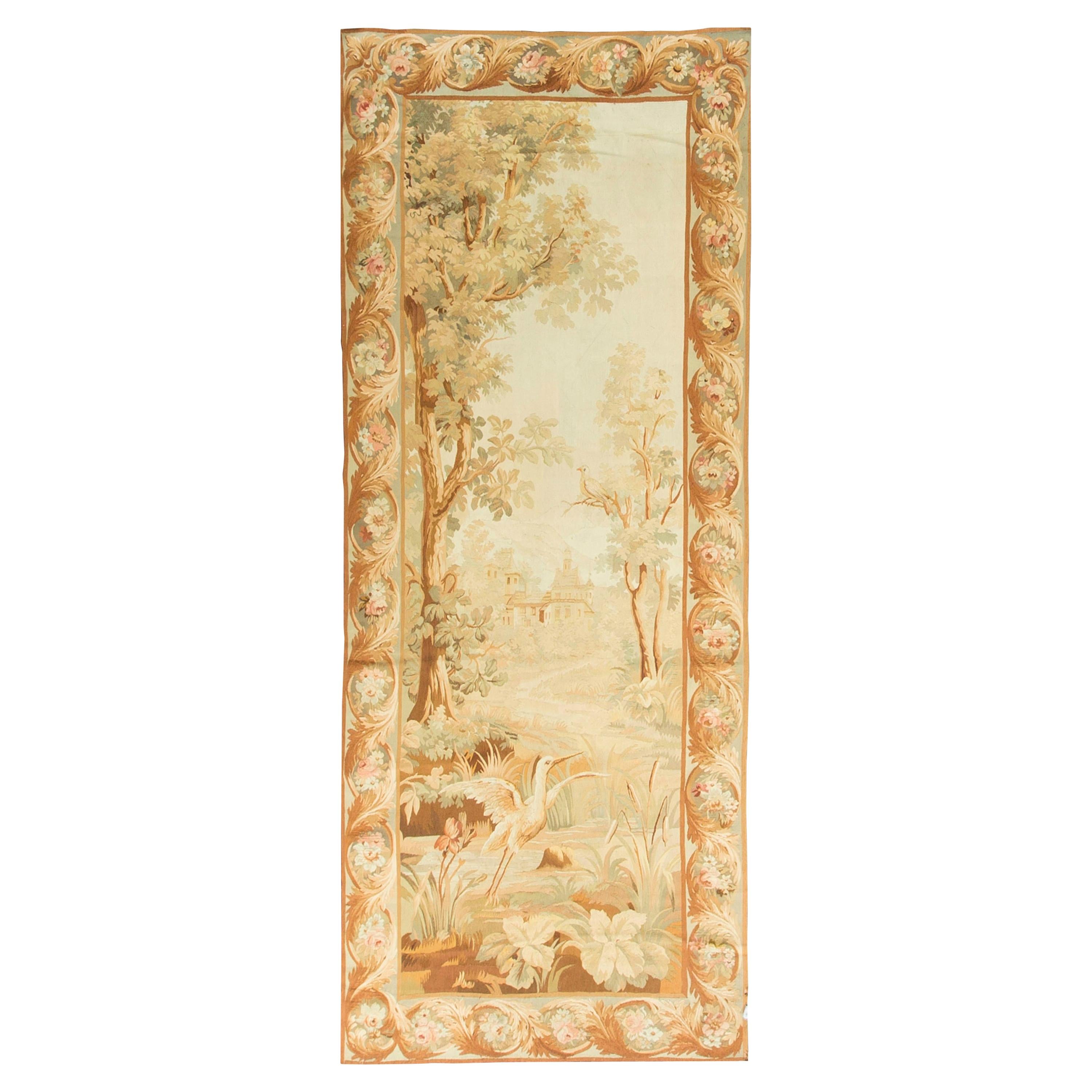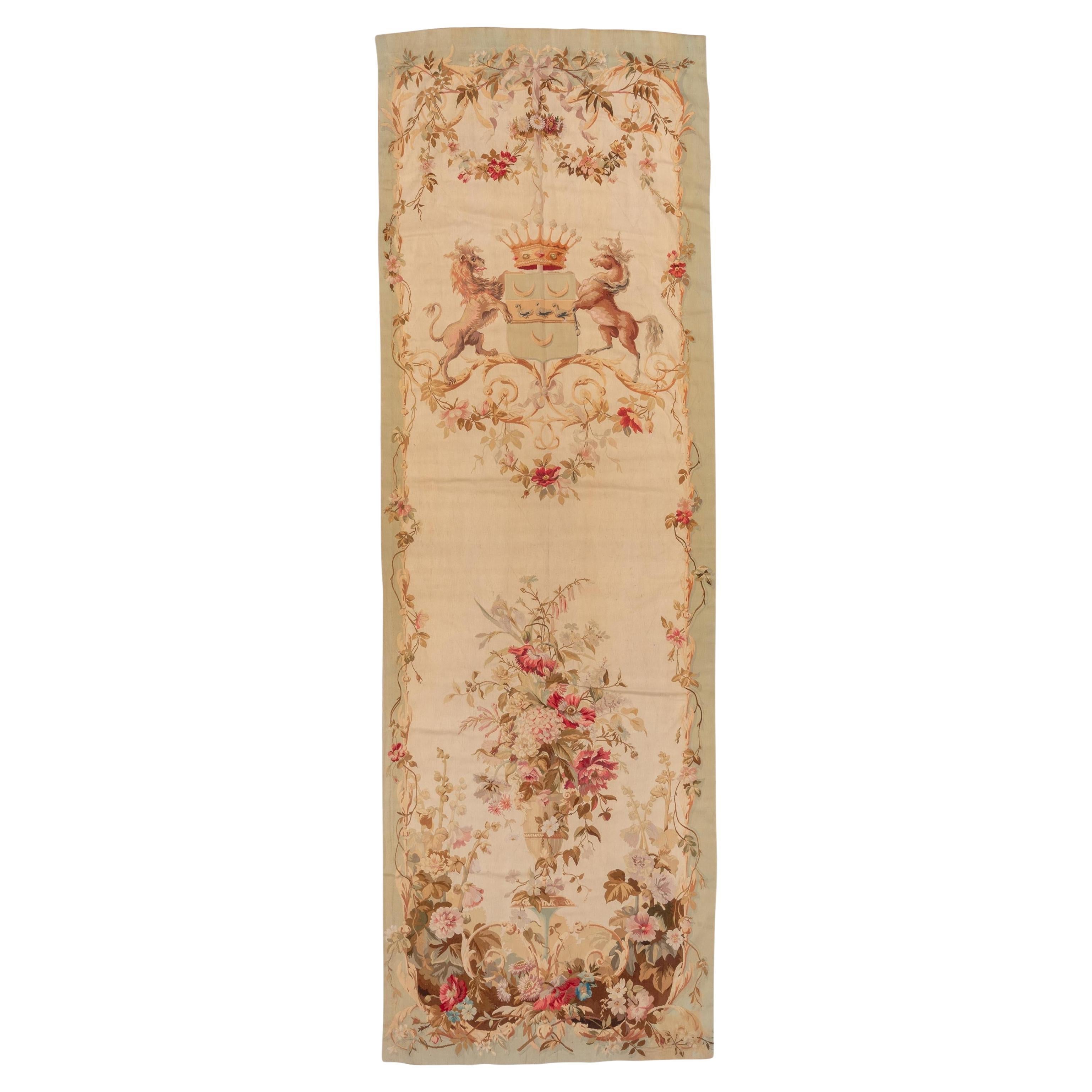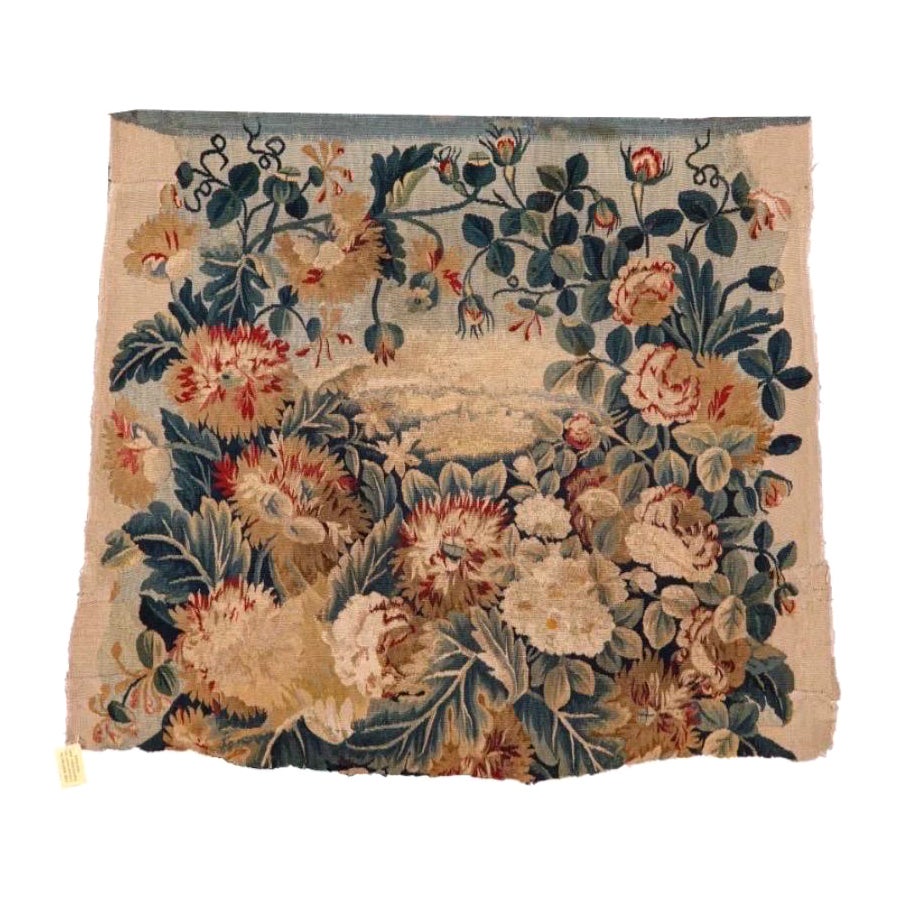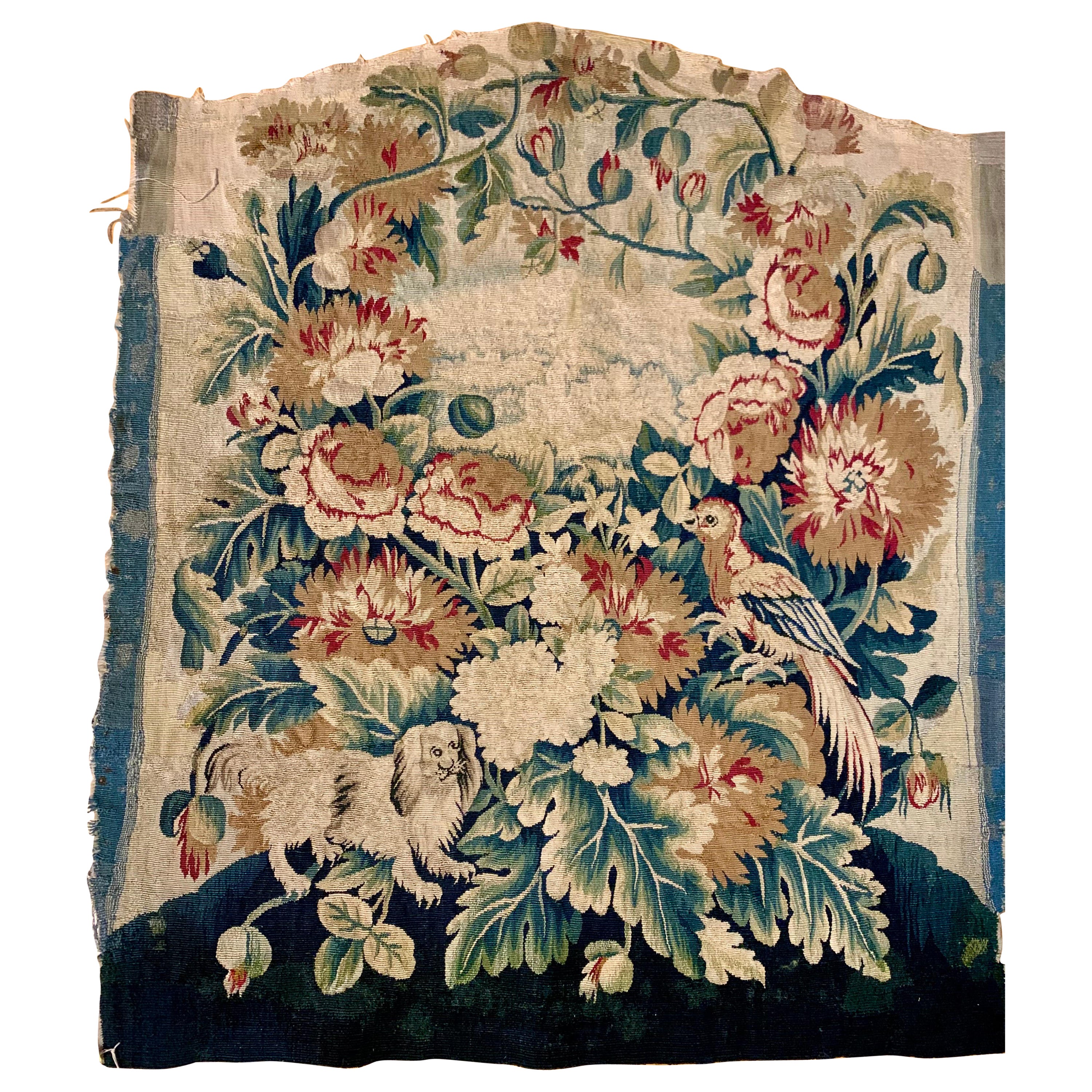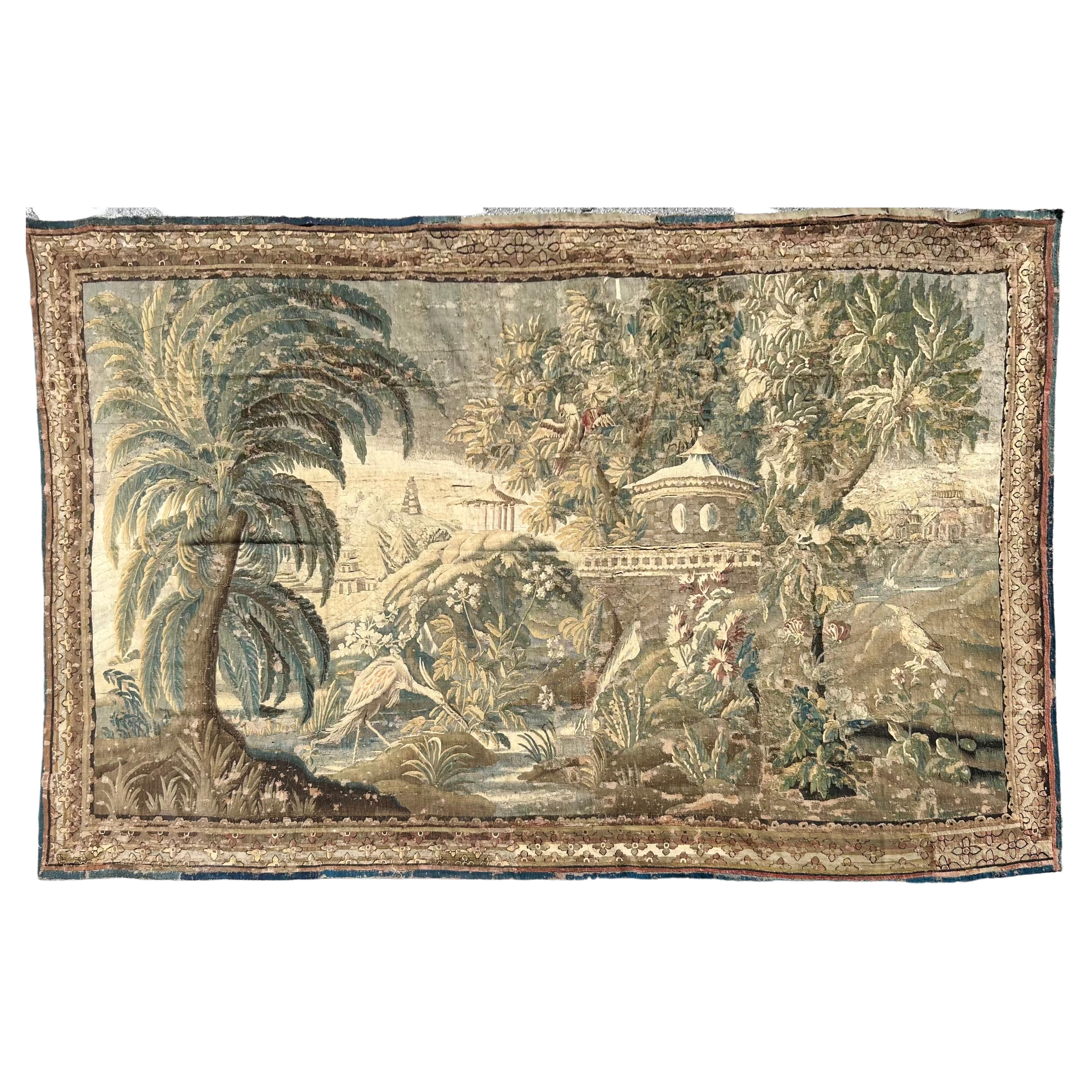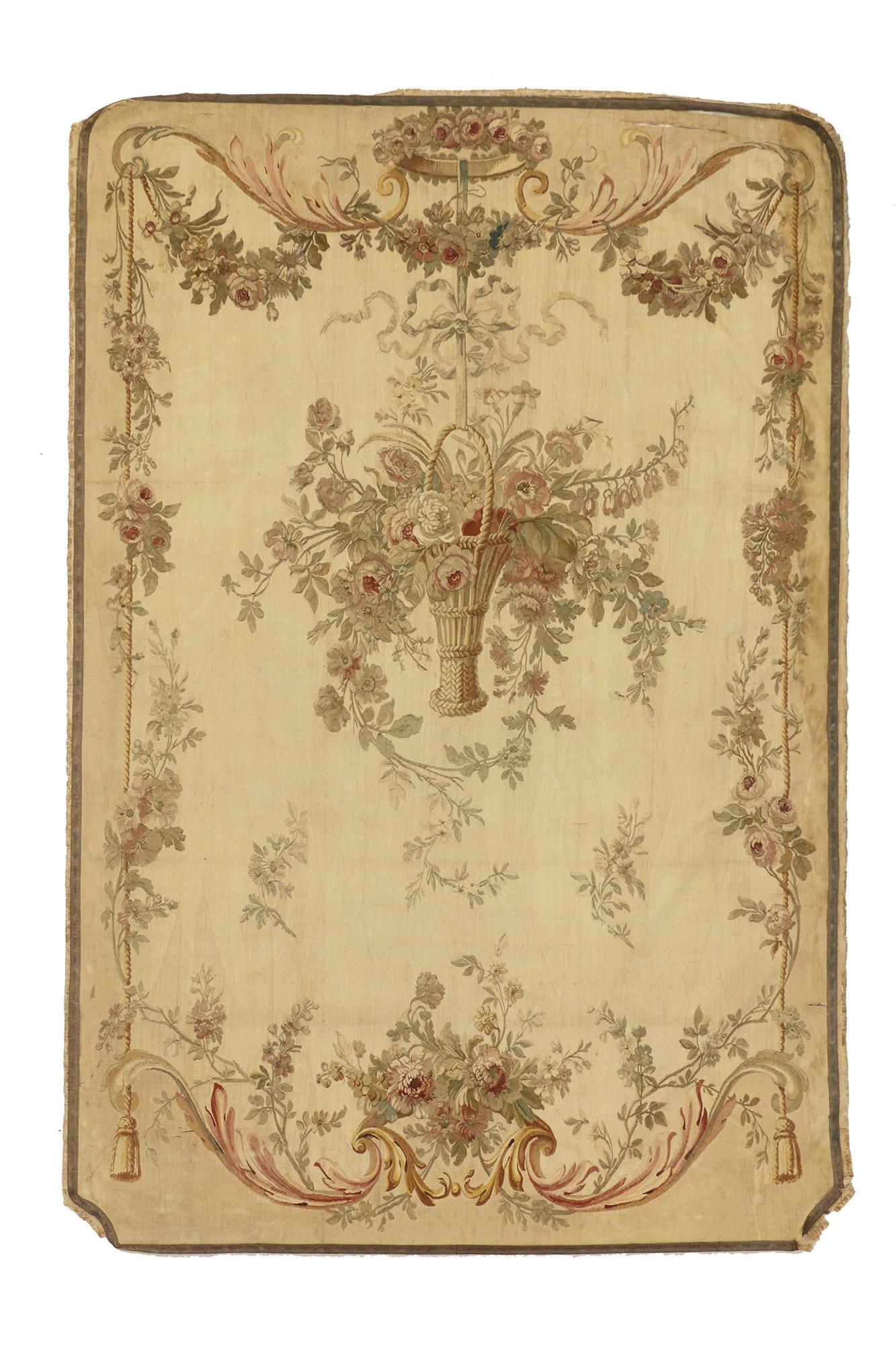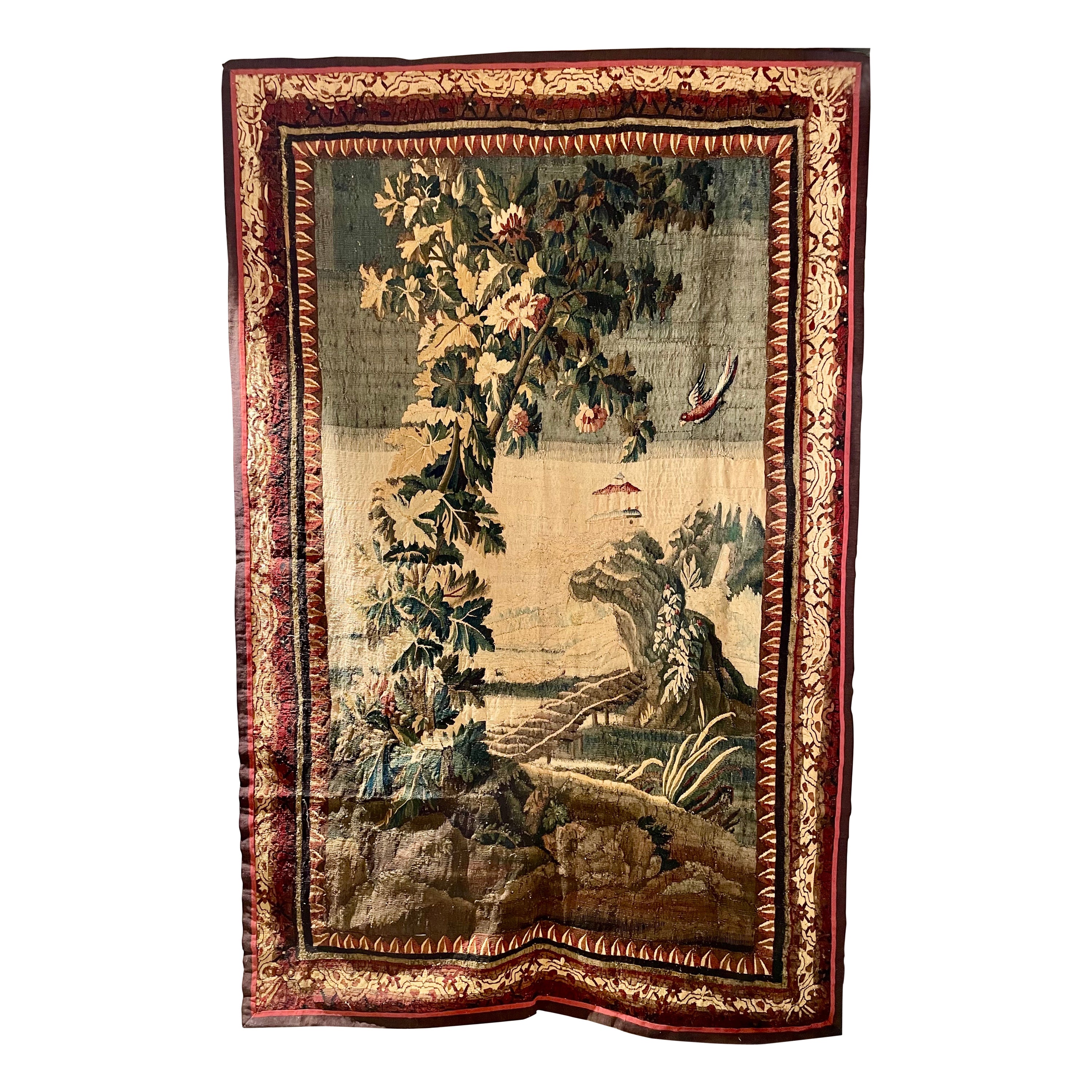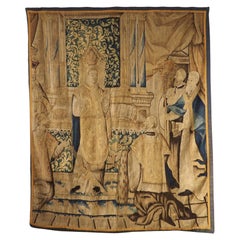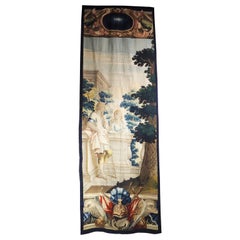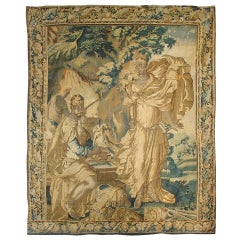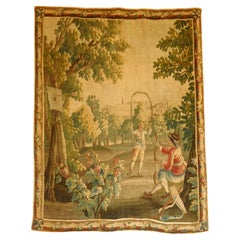
Silk and Wool Aubusson Tapestry, the Entry of Alexander into Babylon, circa 1710
View Similar Items
Want more images or videos?
Request additional images or videos from the seller
1 of 21
Silk and Wool Aubusson Tapestry, the Entry of Alexander into Babylon, circa 1710
About the Item
- Dimensions:Height: 92.25 in (234.32 cm)Width: 85.5 in (217.17 cm)Depth: 0.25 in (6.35 mm)
- Style:Louis XIV (Of the Period)
- Materials and Techniques:
- Place of Origin:
- Period:
- Date of Manufacture:Early 1700s
- Condition:Repaired: Small repairs professionally done. Wear consistent with age and use. Minor losses. Very good condition, with wear commensurate to the age of the tapestry and likely small professional repairs over the years. Metal rings have been installed on the back side for hanging purposes. Linen backing.
- Seller Location:Dallas, TX
- Reference Number:Seller: 720-311stDibs: LU906320426752
About the Seller
5.0
Platinum Seller
These expertly vetted sellers are 1stDibs' most experienced sellers and are rated highest by our customers.
Established in 1983
1stDibs seller since 2011
736 sales on 1stDibs
More From This SellerView All
- Antique Wool and Silk Tapestry from Brussels, Circa 1650Located in Dallas, TXHand-woven in Brussels, circa 1650, this wool and silk tapestry depicts a church scene with six clergymen at an altar. After roughly 375 years, the colors are still vibrant, highlighted by fabrics of blue that punctuate the predominately gold, cream, and brown fibers of the textile. Two young bishops, possibly receiving their consecration, kneel on the steps of the altar, dressed in a cassock beneath a chimere, with one holding a thurible and the other a biretta. A third bishop stands in front of them, as two elder clergymen look on from the right of the altar. The older of the two holds a crozier and a biretta with arms extended from beneath a luxurious blue and gold ferraiolo. On the opposite side of the altar is the sixth and final bishop, who is wearing his biretta and holding a mitre. The luxurious altar is adorned with tall gilt candlesticks...Category
Antique Mid-17th Century Belgian Baroque Tapestries
MaterialsTextile, Wool, Silk
- Tall 17th C. Wool and Silk Tapestry with Colorful Cartouche and Trophy DecorLocated in Dallas, TXProduced during the Louis XIV period, in the 1600’s, this colorful cartouche and trophy décor tapestry was hand-woven using wool and silk. Originally part of a much larger wall covering, the fragment has been placed over a linen backing and a navy-blue border now surrounds the scene. The quality of the craftsmanship of the fragment is quite apparent. Vibrant gold, green and blue hues still shine brightly, which are offset by darker colors such as brown and deep red. If you look closely, you will see gradient colors being used to depict shadows and movement in clothing. The scene features a man with a walking stick in his hand talking to a woman standing behind a baluster railing. Both are clad in flowing garments, with the woman in blue and the man wearing a light pink tunic...Category
Antique 17th Century Louis XIV Tapestries
MaterialsWool, Linen, Silk
- 17th Century French Aubusson - The Forging of the Arms of AchillesBy Aubusson ManufactureLocated in Dallas, TXThis tapestry from the mid to late 1600’s depicts the Forging of the Arms of Achilles. The figure on the right, Thetis, mother of Achilles, has commissioned armor for him to use in the Trojan War. Kneeling down with the helmet of Achilles in hand, is Hephasteus, God of fire, metal working, masonry, and blacksmiths. This piece was manufactured by Aubusson around 1670, based on the design by Issac Moillon (Painter of the King). Another tapestry like this can currently be seen in the Hospices of Beaune (Nicole de Reynie`s. Sylvain Laveissie`re. "Isaac Moillon (1614-1673), un peintre du roi a` Aubusson". Somogy, 2005, p. 158 a` 180.) A photo can be seen on the French Ministry of Culture website. Some fragments have been slipped in which are not perfect to the area’s scene, but, were perhaps part of the rest of this tapestry which was too damaged to use. The tapestry weavers who wove the faces, hands, feet and bodies of the people in tapestries were at the top in terms of skills. This weaver was superb in the depiction of all of the people. Note the delicacy of the hands of Thetis. For those who appreciate the truly old and beautiful without requiring perfect condition will cherish this 345 year old textile...Category
Antique 17th Century French Tapestries
MaterialsTextile
- Antique French Beauvais Tapestry from the Late 17th CenturyBy Beauvais Royal ManufactoryLocated in Dallas, TXThis is a large, horizontal fragment of a late 17th century Beauvais tapestry. Beauvais tapestry manufacture was one of the most well-known tapestry workshops in France. Beauvais was...Category
Antique Late 17th Century French Louis XIV Tapestries
MaterialsWool, Silk
- Pair of Antique Tapestry Borders from Flanders, circa 1580Located in Dallas, TXA beautiful pair of tapestry fragments, hand-woven in Flanders (now Belgium), circa 1580. At roughly 132 inches (11 feet) long, the fragments were, originally, vertical borders to a very large and brightly colored tapestry. The colors have maintained their vibrancy over the last 400+ years, with deep blue, brown, green, and red accents over a gold and cream background. Although the fragments do not have identical scenes, it is readily apparent that they originated from the same source. At the top of each fragment is a bearded warrior clad in golden armor with a flowing blue cape and green greaves. A shield rests on the ground, supported by the soldier’s left hand, while his right hand lifts a spear into the air. Towards the center of the textile is a pair of musicians, one strumming a lute, while the other plucks a lyre. At the bottom of each tapestry is a single female figure, well-dressed and sitting on a bench with one arm overhead. The remaining areas have been filled with fruit bouquets, architectural elements, and other figurative representations. A more recent navy blue border surrounds the scenes and the backs have been lined with a mauve colored linen. Our hand-woven tapestry borders...Category
Antique 16th Century Belgian Renaissance Tapestries
MaterialsTextile, Wool, Silk
- 17th Century Tapestry Fragment from BrusselsLocated in Dallas, TXFountain and Architecture This narrow silk and wool tapestry fragment dates to the 1600s and is from Brussels. It is depicting a statue of the Greek God, Hermes (Mercury to the Ro...Category
Antique 17th Century Belgian Louis XIV Tapestries
MaterialsWool, Silk
You May Also Like
- 18th Century French Wool and Silk Aubusson Tapestry and Engraving, circa 1750By Aubusson ManufactureLocated in Milano, ITLa Jeunesse (Youth) Tapestry Polychrome wool and silk France, Aubusson, circa 1750 It measures 107.08 in height x 104.33 in (272 cm height x 265 cm). State of conservation: good The tapestry is accompanied by the engraving from which the subject was taken. The engraving measures 23.50 in x 25.86 in (59.7 cm x 65.7 cm) with the frame. The Aubusson tapestry has controversial origins: some believe that it was the Saracens who imported this type of work into Europe while other authors believe that the production began at the same time as the marriage between Louis I of Bourbon and Maria de Hainaut in 1310. It was at this time that a considerable importation of tapestries from Flanders into France began, followed shortly thereafter by the importation of their production techniques. At the beginning of the seventeenth century a royal edict from Henry IV halted the importation of Flemish tapestries, contributing to the subsequent Expansion of Aubusson production. The status of royal manufacture was to be granted only in 1665, even though the Nantes edict caused a drop in production because of the forced migration of weavers to Germany. The full recovery and the success of the manufacturing took place during the eighteenth century when the great painters and the tapestry manufacturers began to collaborate. Great French artists of the time and specialist painters, the “cartonniers”, painted “cartons de tapisserie” in oil or tempera, all of which were to be a source for the tapestries. As an alternative to the “cartons”, scenes taken from prints and engravings were freely used. The tapestry in question, made of wool and silk, is in good condition; the colors are still fresh and the silks, which give brightness to the scene, are well preserved. There are a small number of integrative restorations present, while the lining and the suspension system have been recently refurbished. The work is made with a flat-weave, according to the custom of the Aubusson manufactures, which is clearly demonstrated by this work since it shows all the technical and material characteristics typical of the first half of the eighteenth-century production: the “Jeunesse” was probably woven in the middle of the XVIII century. The scene itself is compelling: a rural clearing is depicted, centered around a tall tree with dense fronds with lance-shaped leaves. In the shade of this tree some scenes of courtship can be seen. A couple hugs each other, one is caught stealing a kiss and another, lying softly on the grass, is still at the early stages of courtship: together with the suitor the girl looks with smiling malice at the kissing couple. On the right, two young men practice archery while aiming at a target placed on top of a pole. The scene, with male and female characters intent on games and gallantry in a festive atmosphere, is taken - faithfully, but in mirror-image - from an engraving, which in turn was itself taken from the painting (now kept at the National Gallery in London, inv. NG103 and part of a series with the four ages of man) by Nicolas Lancret, produced around 1735. The tapestry is accompanied by a copy of the engraving, which bears, at the bottom, the name of the author (“N. Lancret pinxit”), the name of the engraver (“N. De Larmessin sculpsit”) and four short verses on the subject of love disputes: Pourquoi tous ces combats si chers a la jeunesse, Quels frivoles talents veut-elle mettre au jour? Non: chacun voudroit vaincre aux yeux de sa Maitresse, La Lice est une Scène ou triomphe l’Amour. Why all these fights so dear to youth, What frivolous talents does it want to bring to light? No: everyone would want to win in the eyes of his Mistress, The Lice is a Scene where Love triumphs. At the bottom we read: “A’ Paris chez N. De Larmessin graveur du Roy Rue de Noyer à la 4 (?) porte cochère a droite entrant par la Rue St. Jacques A.P.D.R. [Avec Privilège Du Roy]”. Nicolas Lancret (1690-1743), along with Antoine Watteau, was a pupil of Pierre Durin and Claude Gillot...Category
Antique Mid-18th Century French Rococo Tapestries
MaterialsTapestry, Wool, Silk
- Fine Wool & Silk Tapestry Noahs Ark Vintage Handwoven AubussonLocated in New York, NYFine Wool & Silk Tapestry Noahs Ark Vintage Handwoven Aubusson 8x10 8' x 10'4" 244 cm x 315cm "Rare Wool & Silk handwoven tapestry depictin...Category
Vintage 1960s Unknown Tapestries
MaterialsSilk, Wool
$16,928 Sale Price20% Off - Louis XVI Aubusson Wool & Silk Tapestry, 18th Century : Games in the ParkBy Aubusson ManufactureLocated in GRENOBLE, FRCharming wool and silk tapestry - 18th century production (Louis XVI period circa 1780) attributed to Aubusson Manufacture. It pictures two young boys playing in the gardens : one is doing archery and the other one is playing skipping rope...Category
Antique Late 18th Century French Louis XVI Tapestries
MaterialsWool, Silk
- French Aubusson Tapestry, circa 1850Located in Secaucus, NJAn Aubusson, circa 1850 tapestry, in soft colors, depicting a typical country scene, with wild birds and trees, with a country house in the background. All surrounded by a wonderful ...Category
Antique 19th Century French Tapestries
MaterialsWool
- Antique Aubusson Tapestry, circa 1880sLocated in New York, NYThis long and narrow tapestry was made to go between windows. The sand field displays a shield of arms surmounted by a count's coronet and supported by ...Category
Antique 1880s French Aubusson Tapestries
MaterialsWool
- Silk and Wool 18th Century French Aubusson Tapestry Panel from FranceLocated in New York, NYLate 18th century Aubusson tapestry panel made in France. Measures: Height 8'6'', width 10'6'' Animals in a central oval cameo amongst garlands, birds, scrolling acanthus leaves a...Category
Antique Late 18th Century French French Provincial Tapestries
MaterialsWool, Silk
Recently Viewed
View AllMore Ways To Browse
Aubusson Panel
Aubusson Tapestry Panel
Horse Urn
Antique Horse Tapestry
Ancient Babylon
Tapestry Horseback
Alexander The Great Tapestry
Mid Century Tapestry Wall Hanging
Wall Hanging Tapestry Mid Century
Tapestry Wall Hanging Midcentury
Antique Verdure Tapestry
Framed Large Wall Tapestries
Large Scene Tapestries
Modernist Tapestry
Mid Century Woven Wall Hanging
Antique Tapestry Fragment
Antique Tapestry Fragments
Tapestry Netherlands
